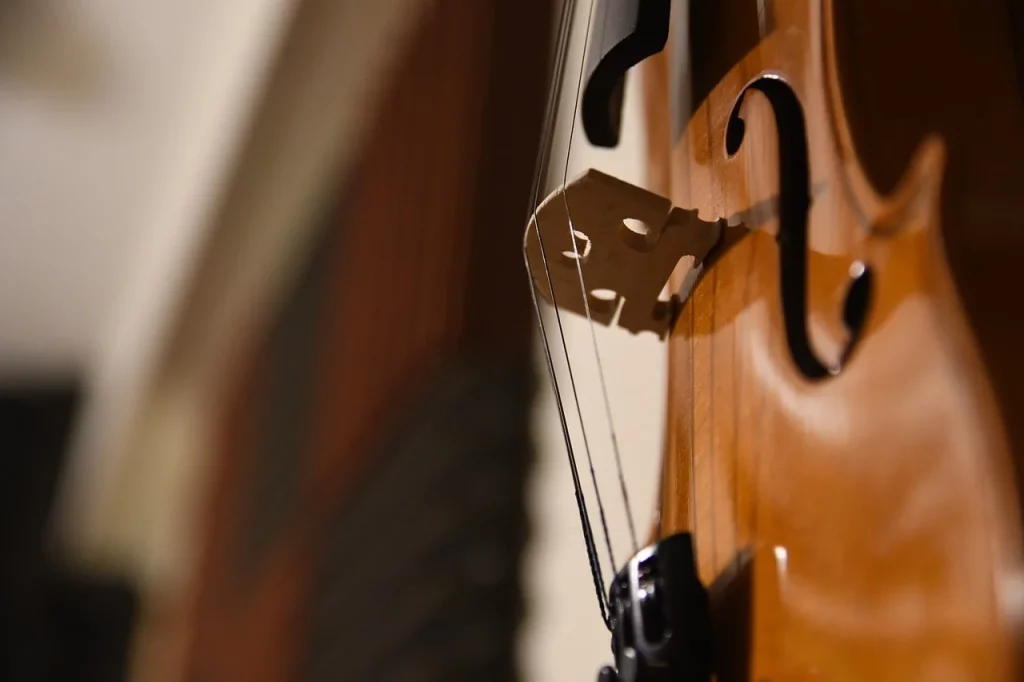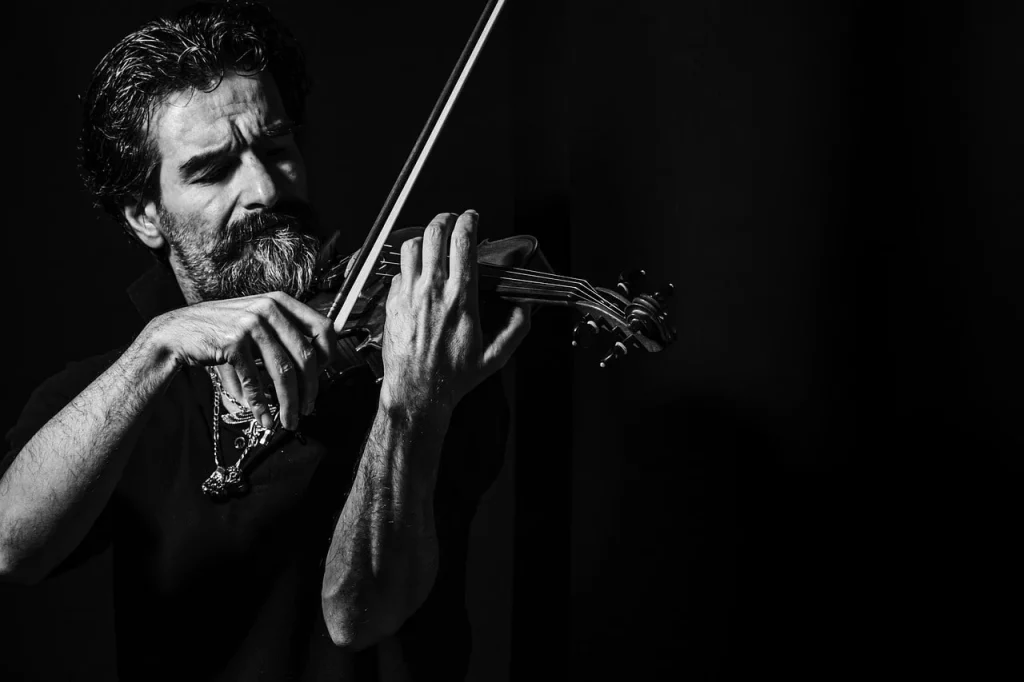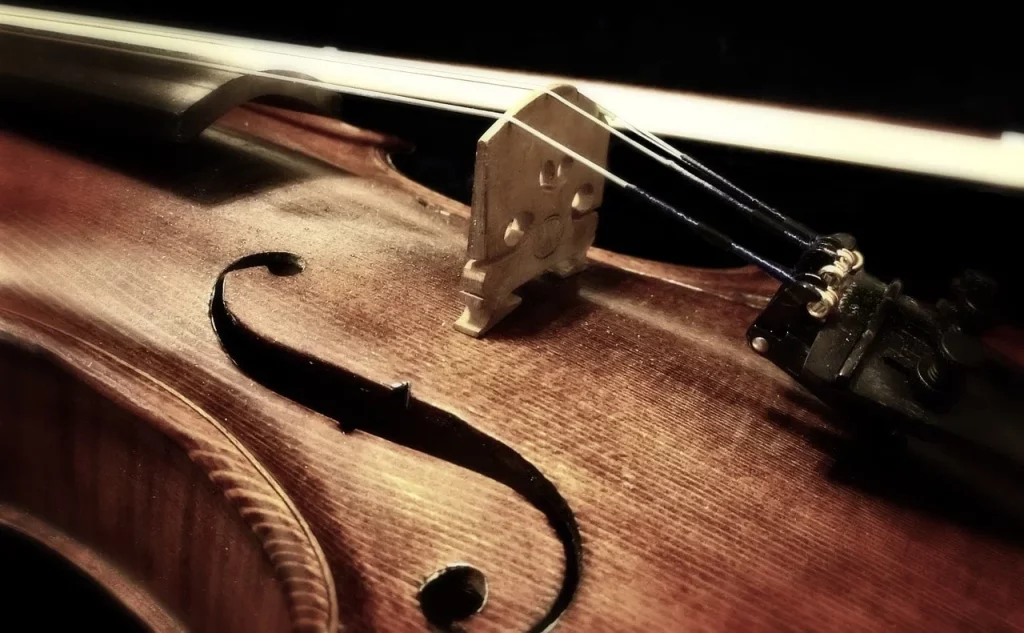Have you ever been captivated by the melodic strings of a violin, its music weaving stories in the air? If so, you’re about to embark on a fascinating journey with all these violin facts. The violin, often considered the soul of an orchestra, is more than just a musical instrument; it’s a bridge connecting centuries of history, art, and human emotion.
From its mysterious origins to the hands of the virtuosos who brought it to life, each fact is a note in the symphony of the violin’s storied existence. Whether you’re a seasoned violinist, a music enthusiast, or simply curious, these facts will strike a chord, revealing the depth and beauty hidden within the curves of this elegant instrument.
When you play a violin piece, you are a storyteller, and you’re telling a story.
Joshua Bell
Violin Facts
Embark on this fascinating exploration, where each detail adds to the melody of knowledge. But don’t forget, there is a quiz at the end of this article that will be your stage to demonstrate your expertise. Pay close attention, and let your passion for violins guide you to success.
- The origins of the violin trace back to Italy in the early 1500s.
- Arab rebab and Byzantine lyra, both string instruments played with a bow, influenced its design.
- Known for creating exceptional violins, Antonio Stradivari from Italy made the famous Stradivarius violins.
- A Stradivarius violin holds the record for being the priciest, sold for over $16 million.
- Common materials for crafting violins include spruce for the top and maple for the back and other parts.
- Originally, violin strings were crafted from animal gut, but today, they are typically steel or synthetic.
- Made traditionally from wood and horsehair, the bow is essential for playing the violin.
- The standard size for an adult violin is referred to as 4/4, with smaller versions for young learners.
- Crucial for sound quality, the sound post inside the violin is often deemed its soul.
- Rosin is used on bows to enhance string friction for better sound production.
- Violin playing is moderately intensive, burning about 170 calories per hour.
- Pitch control is managed by the left hand pressing strings against the fingerboard.
- The expressive vibrato technique involves finger oscillation on the strings.

- At auction, a Stradivarius violin fetched a record price above $15.9 million.
- A standard violin has four strings, typically tuned to G, D, A, and E.
- Since the 20th century, electric violins have been used for electronic sound amplification.
- Baroque violins replicate the style of violins from the 17th and 18th centuries.
- The style and sound of violin playing heavily depend on the bowing techniques used.
- Violins play a key role in various music genres, including classical, jazz, folk, and rock.
- Playing the violin enhances mental abilities like memory and concentration.
- The scroll at a violin’s top contributes both to aesthetics and sound.
- Many violinists begin their training between the ages of four and five.
- Using the back of the bow to strike strings, known as col legno, is an unusual violin technique.
- The art of violin crafting is termed lutherie, and its practitioners are called luthiers.
- Giuseppe Guarneri, a notable 18th-century violin maker, produced violins comparable to Stradivarius.
- The chin rest, not part of the violin’s initial design, was added in the 1800s.
- Simultaneously playing two strings, known as double stopping, creates harmonious sounds.
- The bridge of a violin is pivotal in supporting strings and transmitting vibrations.

- The tailpiece secures the strings at the violin’s lower end.
- Written in the treble clef, violin music often extends beyond the staff’s pitch range.
- For better playing posture and comfort, violinists may use a shoulder rest.
- The f-holes on the violin’s body are crucial for sound projection, beyond mere decoration.
- Different cultures and music styles significantly influence violin playing techniques.
- The Cremona school in Italy is famed for its 17th and 18th-century violin craftsmanship.
- A mute can be attached to the violin’s bridge to modify and soften its tone.
- The tone, projection, and ease of playing a violin are greatly affected by its craftsmanship.
- Prior to Stradivari, the Amati family were prominent Italian violin makers.
- Some modern violins utilize carbon fiber and other advanced materials for improved sound and durability.

- Well-kept violins can remain playable for centuries, as demonstrated by historical instruments still in use.
- Pizzicato involves plucking the strings with fingers for various musical effects.
- The earliest depiction of a violin in art dates to the early 16th century, in an Italian fresco.
- Advanced players can produce harmonics, creating high-pitched overtone sounds.
- Variations in size and shape can slightly alter a violin’s sound and handling.
- Famous composers like Bach, Mozart, and Beethoven composed extensively for the violin.
- Environmental factors like humidity and temperature can impact a violin’s sound and structure.
- Initial violin lessons typically involve simple tunes and scales, progressing to more complex music and techniques.
- Playing notes sharply and detached, a technique called staccato, is common in violin music.
- The varnish on a violin not only serves as protection but also influences its sound.
- Historically, societal norms and biases often discouraged women from playing the violin.
- Regular tuning is necessary for violinists to maintain the correct string tension and pitch.
Violin Myths

Having explored all these fun facts about violins, let’s now move on to the next section. Here, we are going to unravel the actual truth behind some common myths about this beautiful instrument.
- Violins Are Only for Classical Music
They are incredibly versatile instruments used across various genres, including jazz, folk, rock, and even electronic music. Their adaptability to different musical styles makes them popular worldwide. - Stradivarius Violins Are Incomparably Superior
While Stradivarius violins are renowned for their quality, modern violins can match or even surpass their sound. Advances in craftsmanship and materials have significantly leveled the playing field. - You Need to Start Young to Be Good
It’s never too late to learn to play the violin. While starting young can be beneficial, adults can also become proficient with dedication and practice. Passion and commitment are key, not just age. - Violins Always Appreciate in Value
Not all violins increase in value over time. The violin’s maker, condition, and historical significance play a significant role in its valuation. It’s more about the instrument’s quality than its age. - Bigger Violins Produce Better Sound
The size of a violin doesn’t directly correlate to its sound quality. They are sized to fit the player for comfort and optimal performance. Sound quality depends more on craftsmanship and the player’s skill.
No products found.
Violin Quotes

The violin, often described as the soul of music, carries a legacy rich in expression and emotion. Below, you will find a list of my favorite quotes about it. Let me know yours in the comments so I can add them to the list.
The violin is my mistress, but the guitar is my master.
Niccolò Paganini
Niccolò Paganini, a virtuoso violinist and composer, expresses his proficiency and passion for both the violin and guitar, metaphorically elevating their importance in his life.
Life is like playing a violin solo in public and learning the instrument as one goes on.
Samuel Butler
Samuel Butler, an iconic English author, compares life’s unpredictable and improvisational nature to learning the violin while already performing it.
The violin — that most human of all instruments.
Louisa May Alcott
Louisa May Alcott, renowned for her literary works, highlights the violin’s unique ability to express the depth of human emotion and character.
To me, the violin means everything. It can mimic the human voice in all its nuances.
Itzhak Perlman
Itzhak Perlman, a celebrated violinist, reflects on the violin’s profound significance and its unparalleled capacity to emulate the intricacies of the human voice.
The most perfect instrument of all is the violin. It can cry, laugh, whisper, and scream.
Yehudi Menuhin
Yehudi Menuhin, a legendary violinist and conductor, praises the violin’s versatility and emotive power, likening its sounds to the full range of human expressions.
Violin FAQ

As we move on from all these great violin quotes, we approach the final section before the quiz. Here is a list of some common questions about violin that you will find online. Let’s see the answers to all of them.
- Why is the violin considered the hardest instrument?
The violin is often regarded as one of the hardest instruments to master. This is primarily due to its complex playing technique, which requires precise finger placement and bowing skills. Unlike instruments with frets or keys that guide the player, the violin demands a highly trained ear to produce the correct pitch. Additionally, producing a beautiful tone requires a delicate balance of bow speed, pressure, and placement, making it challenging for beginners. - How are violin strings made?
Violin strings were traditionally made from gut, specifically sheep intestines. However, modern strings are usually made from synthetic materials like nylon or steel. The core of the string is wound with various metals, such as silver or aluminum, to adjust its weight and tension. The choice of material greatly affects the sound and playability of the violin, with gut strings producing a warmer tone, while synthetic or steel strings offer a brighter sound and more durability. - Can the violin be self-taught?
Yes, it is possible to self-teach the violin, but it’s a challenging endeavor. The violin requires precise technique, which can be difficult to master without guidance. Beginners may struggle with posture, finger placement, and bow hold, which are crucial for producing a good sound. However, with dedication, online resources, and instructional videos, motivated learners can make significant progress. It’s often recommended to at least have some lessons with a professional to ensure correct technique. - Are violin and viola bows the same?
While violin and viola bows look similar, they are not the same. A viola bow is generally slightly heavier and longer than a violin bow. This difference in weight and size is designed to accommodate the larger size and thicker strings of the viola, enabling the player to produce a richer and deeper sound. - When was the violin invented?
The violin, as we know it today, was developed in the early 16th century in Italy. Its precise origin is unclear, but it’s believed to have evolved from similar string instruments like the medieval fiddle and the Renaissance viol. The most significant developments occurred in the northern Italian cities of Cremona and Brescia. The design of the violin was refined over time, with contributions from famous makers like the Amati family, Stradivari, and Guarneri.
No products found.
Violin Quiz

Welcome to our violin quiz! Remember, if you don’t get at least one question right, you might wake up with a bow instead of a toothbrush in your hand!
Conclusion
As we conclude our exploration of violins, let’s reflect on how this instrument mirrors life itself. The violin requires patience, dedication, and passion – qualities essential not only for creating music but for living a fulfilling life.
Each string and bow stroke tells a story, much like how our choices compose the narrative of our lives. Let’s finish this one with a funny question: If you were to describe your life as a violin piece, would it be a lively jig or a solemn sonata? Let me know in the comments.
2 Sources Used For This ArticleThe Classical Violin Description Page – Classic Cat


